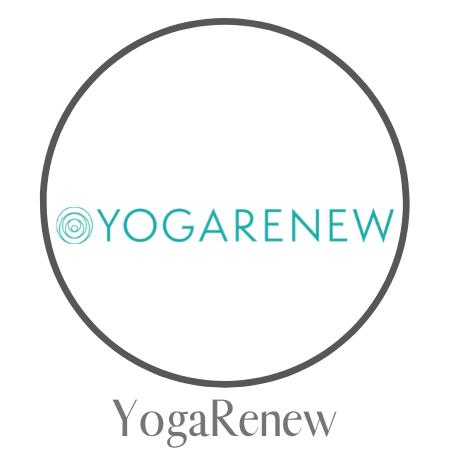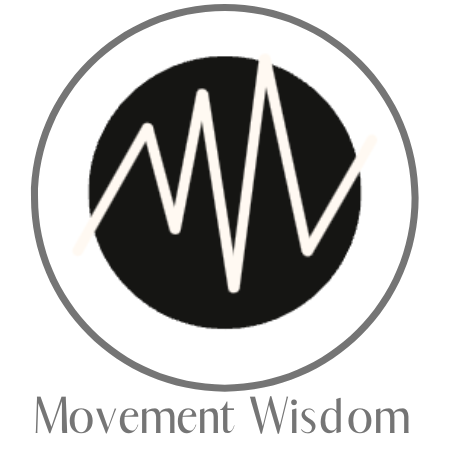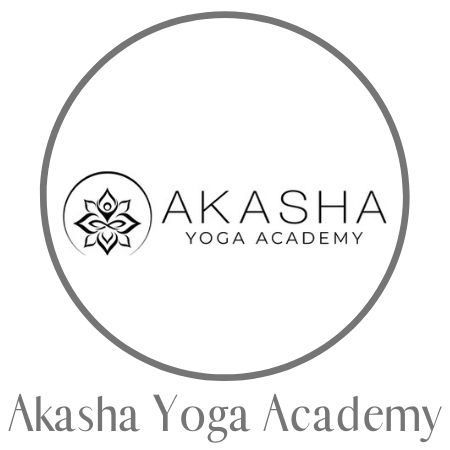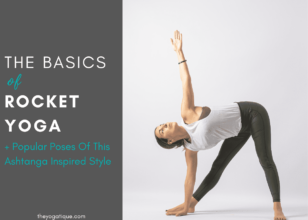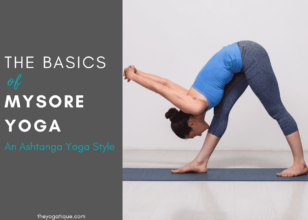If you've ever encountered a group of yogis in the park practicing what looks like a fusion of yoga and acrobatics and yourself staring at them and very curious to try Acroyoga for yourself, this is for you.
In this article, we're exploring all things Acroyoga, answering your burning questions like, do you have to be a super bendy acrobat to achieve those positions?!
Acroyoga is a unique movement practice is exactly what it looks like, a blend of traditional Hatha yoga and acrobatics (with elements of therapeutic Thai massage included).
In this article, we'll explore this trending yoga style plus how you can benefit from it, and which Acroyoga poses you should try first!
Article content:
(Click any link below to jump directly to section)
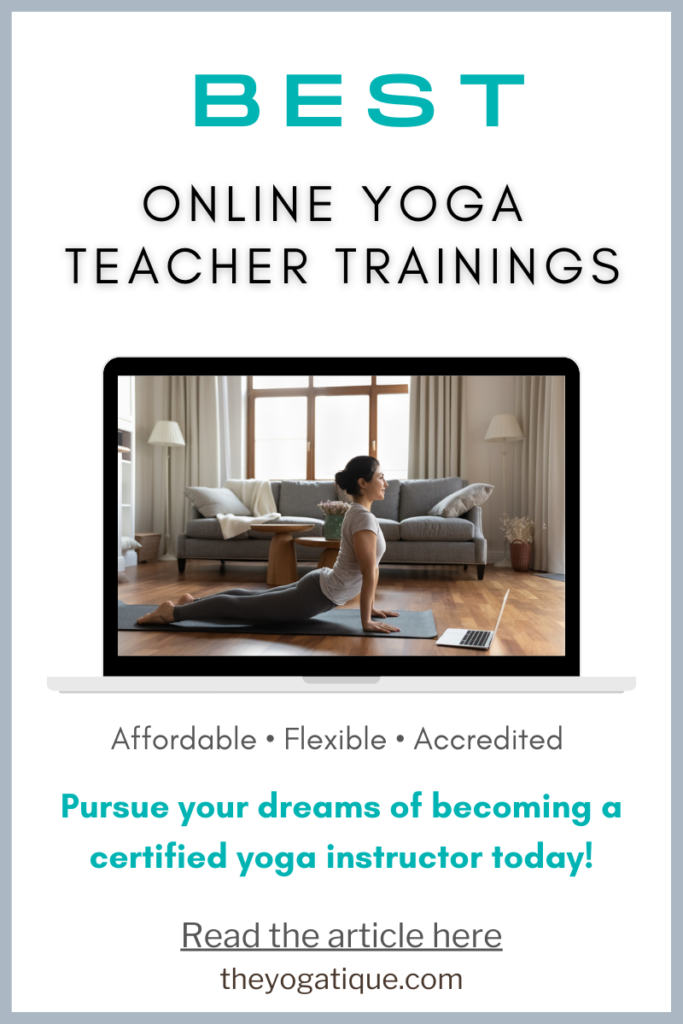
IS YOGA TEACHER TRAINING ON YOUR RADAR?
Online Yoga Teacher Training Offers
- Affordability
- Flexibility
- Certification
- Lifetime access
⬇Click below to discover the best Yoga Alliance registered online YTT's to join now ⬇
What is acroyoga?
Acroyoga is a blend of traditional Hatha yoga and acrobatics. But its a different kind of acrobatics than say, aerial yoga. What's unique about Acroyoga is that, unlike all other yoga styles, you cannot do this practice alone.
Acroyoga requires two or three people who serve different primary roles. So yes, you need a partner for acro yoga—you cannot do it alone.
One partner will be the base; they will typically lie down with their back on the ground as they hold the other person's weight.
The second person is the flyer, who practices acrobatic positions or yoga poses while elevated by the base.
The base is typically heavier and stronger, while the flyer is usually the lighter and more flexible yogi.
Finally, the third person will be the spotter, assisting the flyer and base and helping to keep them safe. Having this third person, or spotter makes the practice much safer.
You can do this physical practice with your partner or a friend or join a group Acroyoga class and pair up with another yogi there – you do not need to be a “couple” to do acroyoga!
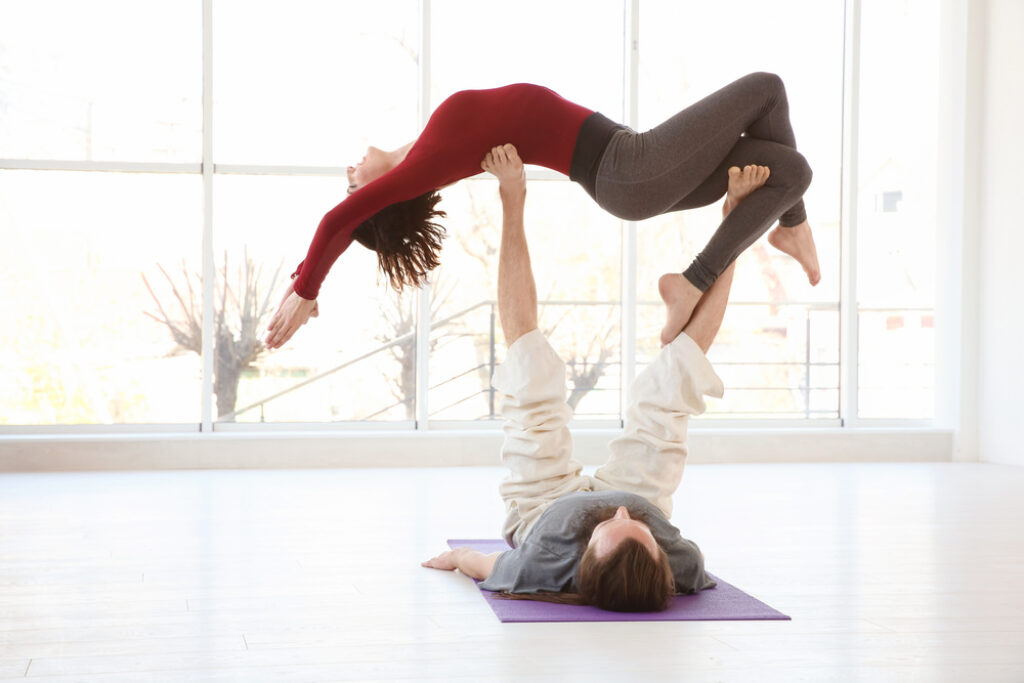
The history of Acroyoga
Acroyoga originated in the USA in 2003 when yogi Jenny Sauer-Klein and acrobat Jason Nemer founded their school AcroYoga International.
Jenny and Jason blended traditional yoga with healing arts (lunar practices) like Thai massage and various forms of acrobatics (solar practices) like circus arts and dance Acro. The result was a therapeutic flying yoga practice.
They divided the practice into two styles; L-basing and Standing. L-Basing is the most common style and involves the base laying on their back on a yoga mat while holding the flyer.
⬇Great Yoga Alliance registered yoga teacher trainings you should look into⬇
5 benefits of Acroyoga
Whether you're the base or the flyer, Acroyoga provides an excellent workout. However, whether you're a base or a flyer will determine the benefits you get from a class. Five benefits of Acroyoga are:
- Improves communication skills: Open, direct, and compassionate verbal communication cultivates trust, which is vital in Acro yoga. The more you practice, the better you will become at communicating effectively.
- Enhances concentration: If you think Dancer's pose requires a high level of focus, try doing it in an elevated inverted position!
- Promotes playfulness: One top reason “Acroyogis” adore this practice is because it is fun. As adults, we tend to be very serious and have lost our sense of playfulness, curiosity, and adventure. Acro yoga allows us to reconnect to our inner child again.
- Enhances balance and coordination: Many acro yoga poses require balance and coordination, which can be developed through consistent practice.
- Reduces stress and anxiety: Like other forms of yoga, acro yoga can help reduce stress and anxiety by encouraging deep breathing and mindfulness.
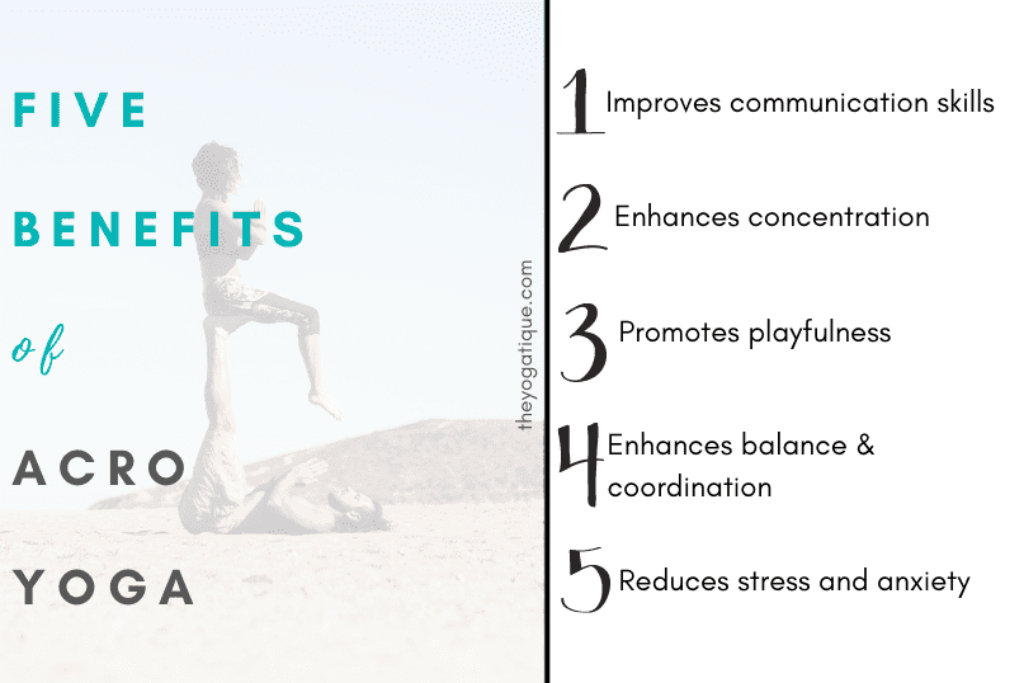
3 Acroyoga poses for beginners
With all the advanced Acro yoga poses you see on Instagram, it's easy to assume that Acroyoga is too hard for anyone who is not a dancer or acrobat.
That being said, when trying this yoga style for the first time, it's essential to learn from a qualified instructor and have an experienced spotter who can guide you and ensure you don't get injured.
When practiced in this way, Acroyoga is entirely safe. However, more injuries happen when inexperienced yogis practice independently and without a spotter. Here are three beginner acroyoga poses you can try first:
1. Plank on plank
This is one of the best starting postures for beginners, as both partners build the arm and core strength needed for the more advanced poses. Here's how to do Plank on Plank:
- Base: come into a standard plank position.
- Flyer: rest your feet on your bases shoulders and then grab ahold of their ankles so you are in a plank position, balancing on your base, facing the opposite way.
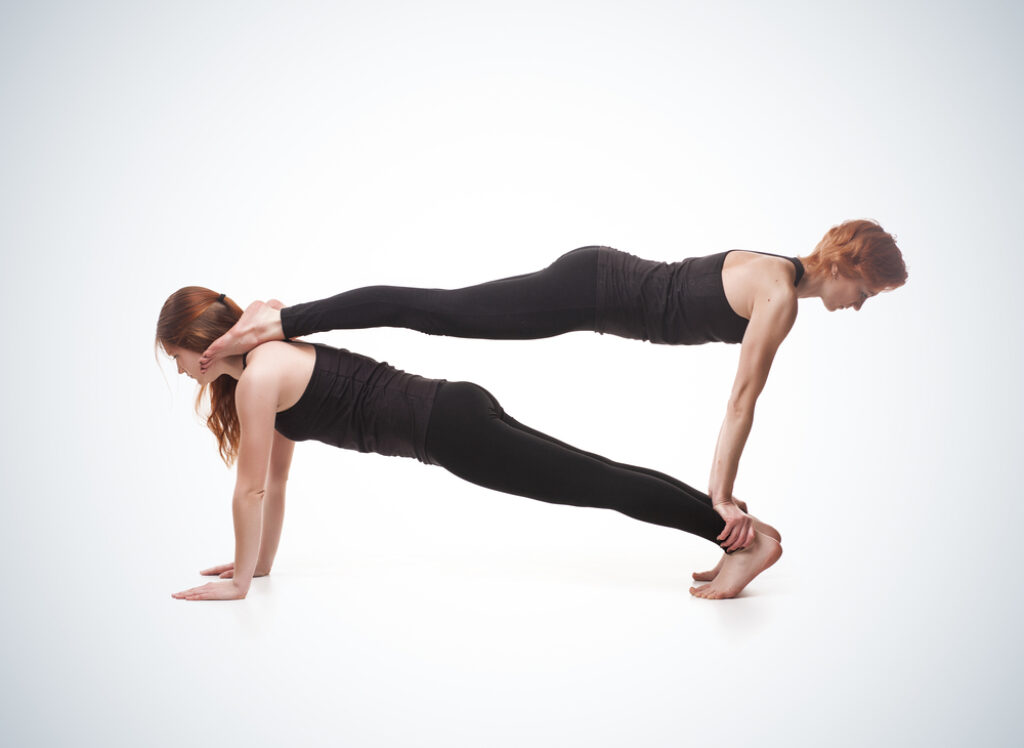
2. Front bird
Also known as plank press or front press, this pose is the next step from “plank on a plank.” Here's how to do Front Bird:
- Base: lay in an L-position on your back with your arms raised and your knees folding into your chest so that your feet are facing upwards and outwards.
- Flyer: rest your hips on your base's feet and grab their hands for stability.
Once the base and flyer are in the above position, the base can straighten their legs, and if it's safe, the base and flyer can let go of each other's hands.
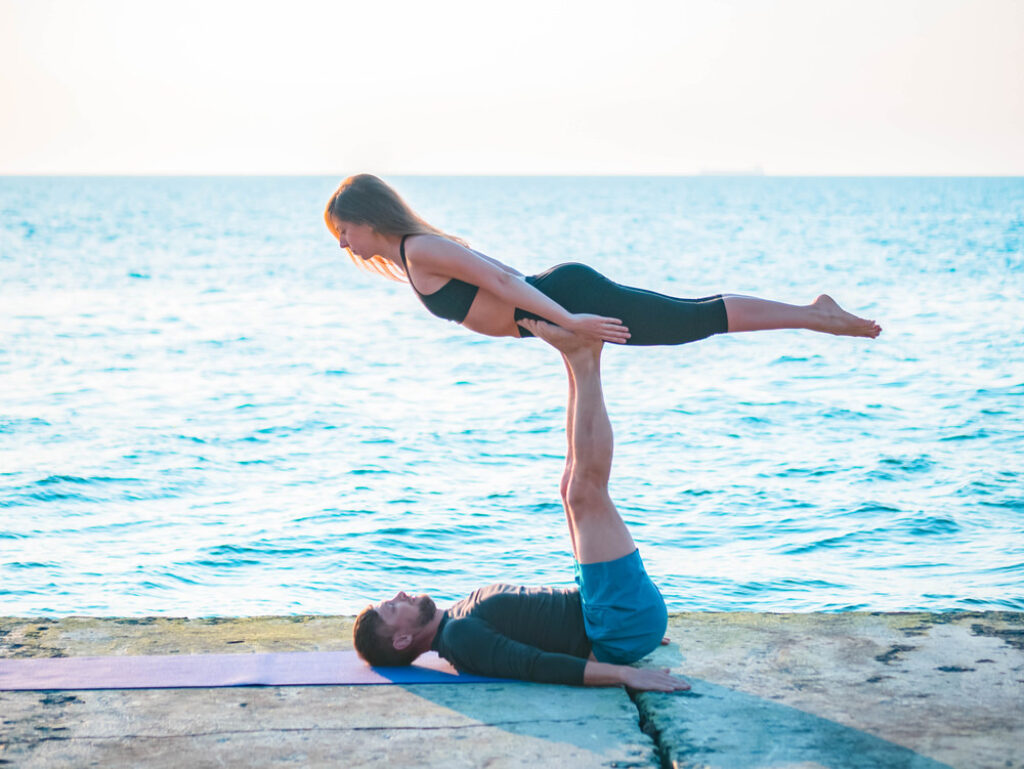
3. Folded Leaf
This therapeutic pose can be performed directly from the front bird position. Here's how to do Folded Leaf:
- Base: turn your feet out, creating a V shape in the flyer's hips.
- Flyer: fold yourself over your base's legs.
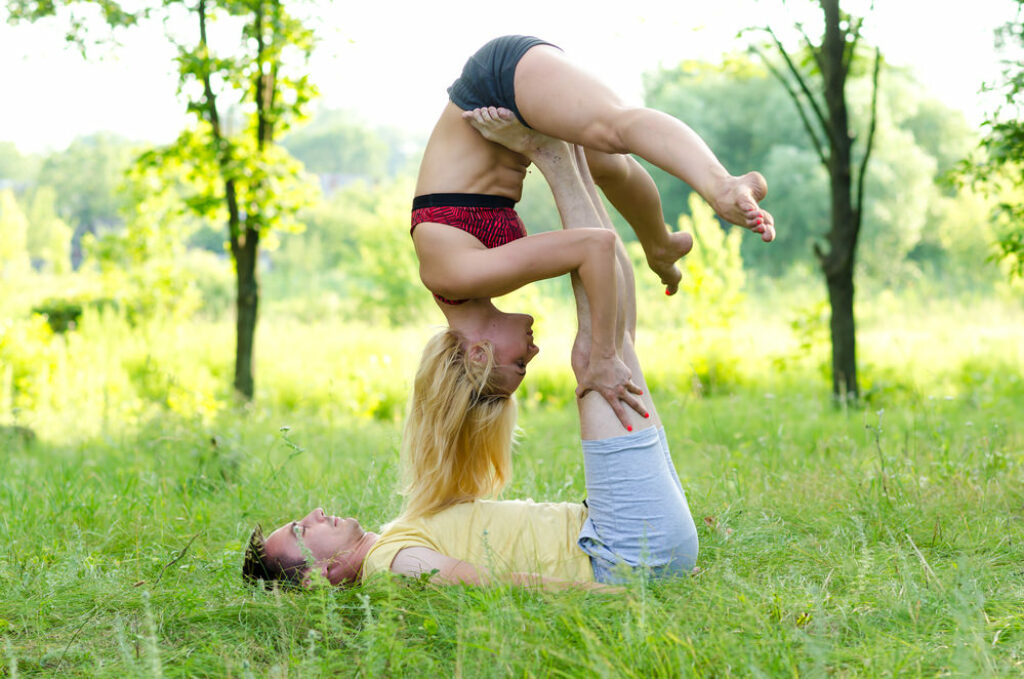
Takeaway
I hope that by making it to the end of this article, you now better understand that Acro yoga is a fun, challenging practice that builds strength, balance, and flexibility.
As a two-person practice, Acro also helps you improve communication skills and learn how to trust others. What's more, providing you train under the guidance of a qualified instructor, no previous circus experience is required (yay!)
FAQ about Acroyoga
What is AcroYoga good for?
Acroyoga will help you increase your flexibility, build strength, and develop balance. The practice will also help you cultivate trust and connection with other people.
What is partner yoga vs Acroyoga?
Partner yoga classes and workshops usually start with assisted postures on the floor while Acro yoga incorporates more acrobatic poses.
Some online yoga studios, online yoga teacher training programs, and brands that we write about may offer us a small percentage should you decide to purchase after reading our content. Thank you for enabling us to exist!


